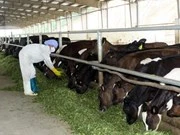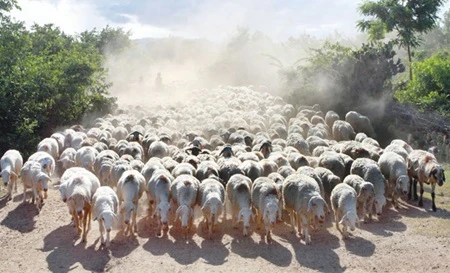The Government is implementing a line-up of policies to support impoverished citizens in land for production, capital, education, health insurance and others, said Minister of Labour, Invalids and Social Affairs Pham Thi Hai Chuyen.
Besides, essential infrastructure including irrigation systems, transport systems and many other indispensable facilities have been built to increase the livelihoods of low-income residents under Resolution No. 30, a programme that funds fast and sustainable poverty reduction in 64 districts across the country.
The Government also invested in infrastructure in an additional 30 deprived districts to facilitate production activities while helping the localities escape poverty.
Minister Chuyen said the income used to judge poverty rates for 2006 to 2010 was 200,000 VND (8.96 USD) per person per month for rural areas and 260,000 VND (11.65 USD) for urban areas. The line will rise to 400,000 VND (17.92 USD) in rural areas and 500,000 VND (22.4 USD) in urban areas starting in 2016.
The Government also asked the Ministry to build multidimensional poverty standards for the 2016-2020 period that include evaluation of income, as well as access to basic services like healthcare, education, fresh water and information.
Chuyen said that instead of 16 National Target Programmes, the Government will focus on two programmes: building new-style rural areas and reducing poverty in a sustainable manner.
In his recent speech at the UN General Assembly, President Truong Tan Sang affirmed that Vietnam has completed its Millennium Development Goals (MDGs) in poverty alleviation two years ahead of its international commitment.
Vietnam slashed the rate of impoverished households from 58 percent in 1993 to 5.97 percent by late 2014, becoming an outstanding example of poverty eradication as recognised by the UN and the international community.
During the first nine months of 2015, more than 572 billion VND (25.67 million USD) was donated to the Fund for the Poor, helping the organisation build and repair nearly 19,600 houses for low-income earners, assist 204,800 deprived families with their agricultural activities, and provide medical check-ups and examinations to more than 1.5 million people.-VNA






















